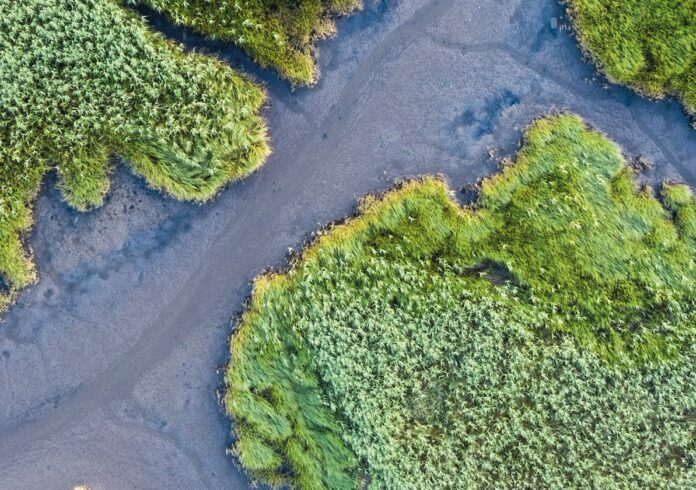Billions of people’s lives depend on groundwater sources that are polluted and overexploited or at risk. Some of the damage is irreversible and, according to the United Nations recent World Water Development Report ‘Groundwater: Making the Invisible, Visible’ (WWDR 2022), many key decision makers lack the vital knowledge needed to manage this complex ‘invisible’ resource.
To help combat this UNESCO in cooperation with UN-Water is organising a global summit on groundwater in December 2022, and the WWDR launched on World Water Day aims to raise awareness of the issues. The substantial report presents significant details on all aspects of groundwater, spanning hydrogeological concepts and terminology, pollutant pathways and over-exploitative uses, groundwater-dependent ecosystems (GDEs), climate change impacts on groundwater, and ultimately the scope to build knowledge and capacity to overhaul policy planning, management, and financing.
A resource in crisis
The report makes clear that freshwater abstraction increased considerably during the last century and is still increasing in most parts of the world. Seasonal climatic variation, climate change and intensive exploitation over recent decades have devasted many local and regional scale water resources. Dramatic shrinkage of major lakes (e.g., Aral Sea, Lake Chad, Lake Urmia, among others), disappearing springs, and striking reductions in river flows in major rivers such as the Ganges, Congo, and Murray-Darling provide clear visible evidence. Under the surface, ‘reliable’ groundwater levels are steadily falling in intensively exploited aquifer systems, including the Ganges-Brahmaputra basin, the North China Plain and the Central Valley in California.
Groundwater use in human society
The report examines the three main water use sectors in human society: agriculture, rural and urban human settlements and industry in substantial detail. A recurring point is the increasing competition for groundwater between these sectors and reduced availability of groundwater resources constraining development. It notes the recent high-profile delayed opening of a new Tesla Factory in Brandenburg, Germany, due to concerns the project might affect drinking water supply, demonstrating that groundwater allocation is not a problem confined to developing countries.
Increased industrial accountability is a critical part of groundwater becoming ‘visible’. The report notes that “industry is paying increasing attention to the risks and consequent challenges to its freshwater supply’, as a lack of water can have a significant influence on ‘business viability, return on investment, and profits”. Financial institutions in corporate lending are paying attention to the level of water risk. The report identifies the broadening use of economic instruments to drive sustainability in water and water stewardship responses.
By summarising the overall importance of groundwater for each sector and the consequent depletion and pollution impacts, the report provides the context for regional and country comparisons and information on the various controls and management techniques that are being applied including regulation, economic incentives, and awareness campaigns.
Groundwater-dependent ecosystems and climate change
Underpinning human needs for groundwater are the needs of groundwater-dependent ecosystems (GDEs). The report provides a wealth of information on the different types of terrestrial, aquatic, and subterranean GDEs, their ecosystem services and the threats they face.
Interestingly it notes that GDEs and services are generally under-represented in the United Nations Sustainable Development Goals (SDGs), despite having a significant role in target 6.4 (Water use and scarcity) and Target 6.6 (Water-related ecosystems), in part because the importance of groundwater is poorly recognised. According to the report, “data collection remains focussed on the spatial extent of open water with no focus on groundwater, nor on the differentiation or mapping of GDEs.”
Different types of groundwater systems will and are responding differently to climate change and the report details the varied responses to direct and indirect climate change impacts, contrasts vulnerable with resilient systems, and the range of human adaptation and mitigation activities relating to groundwater.
The essence of groundwater as well as the human use of it varies considerably and so the five regional perspectives from Africa, Europe & North America, Latin America & the Caribbean, Asia & the Pacific, and the Arab region, that demonstrate regionally specific issues and case studies provide valuable contextual information.
Governance and management: challenges and opportunities
Finally, response options are described and discussed in terms of expanding the knowledge base, groundwater policy and planning, groundwater management, transboundary aquifer resources, and financing.
One of the main aims of the report is to provide decision-makers with knowledge and tools to formulate and implement sustainable water policies. Within a framework that spans policy principles to implementation approaches the report sets out six specific instruments to target groundwater management.
Along with examining the role of different institutions and the impact of public agency performance on groundwater levels and pollution, the report confronts the contentious issue of Water Rights. It highlights the emphasis of the Groundwater Governance Project (initiated in 2016 by the Food and Agriculture Organization, FAO) that “groundwater should be brought within the public domain to ensure effective management despite the legal and practical challenges this may entail.” A range of successful and unsuccessful ownership transition country projects provide insights into the challenges involved.
Conclusion
As the global population continues to grow our reliance on groundwater will only increase and so whilst much of this report is a sharp wake-up call regarding the state of groundwater and serious management weaknesses, it also provides detailed information to rectify this.
The report concludes with nine actions in terms of prudent development, governance, data and information, institutional strength and stakeholder inclusion, legal provisions, transboundary cooperation, groundwater policy, and financing creating the enabling conditions to move forward.
In the foreword Audrey Azoulay, Director-General of UNESCO, concludes: “When it comes to groundwater, many challenges and opportunities lie ahead. UNESCO is committed to addressing these, notably through its Intergovernmental Hydrological Programme. I therefore trust that this World Water Development Report will inspire decision-makers to adopt more focused approaches to developing, managing and governing groundwater – and, in doing so, make the invisible visible.”








